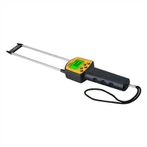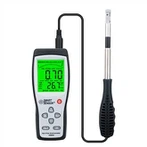Sharing on the working principle of hydrogen gas detector
Hydrogen gas is a combustible gas, and the hydrogen gas detector is mainly used for detecting the concentration of hydrogen gas.
The working principle of hydrogen gas detector:
The core component of a hydrogen gas detector is a gas sensor, which is refined through the electromagnetic field of nature. In a certain temperature, pressure, gas and other environment, when hydrogen gas is present in the air, a chemical reaction occurs in the hydrogen gas, and the resistance changes, generating an electrical signal that is converted into voltage to achieve hydrogen gas detection.
One important reason for using a hydrogen gas detector is to detect the flammability of hydrogen gas and prevent the risk of explosion in case of hydrogen leakage. The explosion limit of hydrogen gas is 4.0% to 75.6%, and catalytic combustion sensors or infrared sensors can be used to detect its flammability; Another way is to detect its specific concentration, which needs to be clarified in some scientific experimental data analysis. Electrochemical sensors can be used to detect its precise concentration.
Pay attention to the lifespan of various sensors
All kinds of gas sensors have a certain service life, that is, service life. Generally speaking, in portable instruments, the service life of LEL sensors is relatively long, usually around three years. Therefore, sensors should be tested at any time and used within their effective period as much as possible. Once a malfunction occurs, it should be replaced promptly.
Pay attention to the concentration measurement range of the testing instrument
Various toxic and harmful gas detectors have their fixed detection range. Only by completing the measurement of the gas detector within its measurement range can the accurate measurement of the instrument be ensured. If the measurement range is exceeded for a long time, it may cause permanent damage to the sensor.






